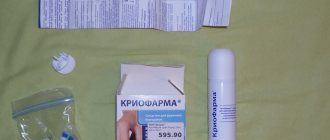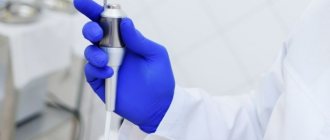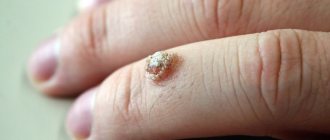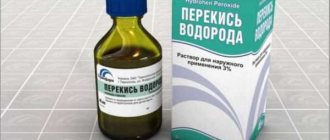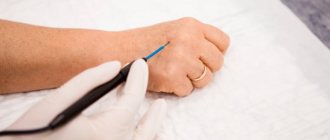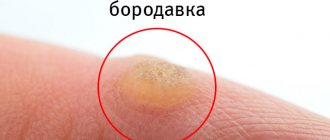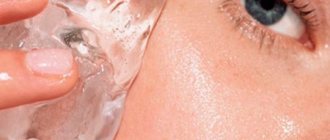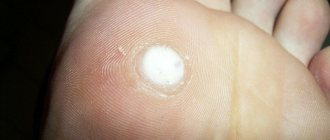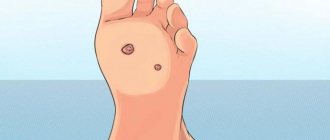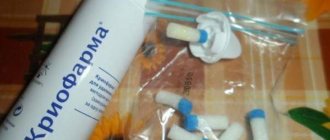What are the most common warts?
Most often (up to 70% of all cases), patients report warts that bother them, and the majority of patients are school-age children. Warts are also found in 20% of students. Plantar warts are more common in adults (34% of cases), as opposed to flat warts, which are again more common in children (4% of all warts).
An experienced dermatologist can easily determine the type of wart during a consultation. However, in rare cases, especially if the wart is injured, it is difficult to diagnose it only by examination, and then the doctor can perform a biopsy of the derivative and histological examination.
Can warts cause complications?
Warts usually do not cause complications unless they grow, become painful when walking, and cause psychological discomfort for aesthetic reasons. In rare cases, injuries can spread to adjacent areas.
Patients with a significant defect in the immune system (for example, immunodeficiency of various origins) retain the theoretical possibility of malignant formation of a simple wart, although this does not occur in everyday practice. This is in contrast to genital warts, which can also be caused by oncogenic types of human papillomavirus (HPV). Thus, to avoid the complications listed above, radical removal of warts is recommended in all cases.
Treatment at home
You should not try to get rid of warts at home using traditional methods of therapy. They are not only ineffective in most cases, but can also lead to the development of a number of complications:
- wound infection with the development of purulent inflammation;
- spread to healthy areas of the skin;
- bleeding.
In some cases, viral warts can develop into malignant tumors. Therefore, when removing them, a histological examination is required, which is not possible to perform at home.
Therefore, you should not try to get rid of viral warts on your own. It is necessary to consult a doctor and carefully follow all his prescriptions and recommendations.
Wart removal
Although scientific literature suggests that with a good immune system, warts can disappear on their own within a few years, medical practice shows the opposite. The main problem with treating warts is that there is currently no method or medicine to remove the virus itself, so a doctor cannot guarantee a 100% cure. All treatment is aimed at removing the wart itself, but does not prevent HPV recurrence.
Basic ways to remove warts:
- Laser;
- Cryodestruction with liquid nitrogen;
- Medicines;
- Removing warts surgically.
Ideally, wart removal should be carried out by an experienced dermatologist, since incorrectly prescribed treatment may not only not help, but also worsen the situation. Warts are treated only by radical removal, which, as already mentioned, can be carried out with a surgical laser, liquid nitrogen or special drugs.
Our center uses any of the above methods for removing warts. In each case, the treatment method is selected individually.
How does the location and type of growth affect the choice of technique?
There are 4 types of warts:
- vulgar - in the form of small nodules, often growing on the fingers and toes, the backs of the hands;
- flat – typical for teenagers, they come in the form of protruding spots; these also include plantar (pinuses);
- filamentous (acrochords) - elastic thin outgrowths on a stalk that appear on the face (eyelids, lips) and neck;
- genital warts - most often localized on the genital mucosa; They look like cauliflower.
These 4 types are of viral origin and belong to real warts.
But there are also senile keratomas, which are caused by functional disorders in the skin. They do not require treatment, only observation. If desired, cryotherapy can be used.
The doctor recommends a method of removal , but in the end it is the patient who chooses. How the choice of method depends on the type of wart: small formations can be safely removed by a radio wave “knife” or liquid nitrogen .
The radio knife can be used on the face and neck, feet and palms, and groin. It is not used for papillomas on the eyelids. They can use laser or liquid nitrogen.
Freezing is also used on the hands and feet (on the soles), papillomas on the neck. The cryo-method can be called universal. It's safe.
Laser - removes any warts on any part of the body, including under the nail.
The surgical method is used for large growths on the oral mucosa.
Electrocoagulation is recommended for flat and vulgar warts. Can even be used on the face. For large formations the effect is insignificant. Also, the electric knife is not used for plantar warts, because they usually have deep roots and are very dense.
Important!
It is advisable to remove plantar growths only in a hospital.
The chemical method gives good results for plantar lesions, flat and pointed. Physical methods are ineffective in comparison.
Laser wart removal
The procedure is performed under local anesthesia after the doctor has administered painkillers. Depending on the size of the derivative, laser removal of warts takes up to 15 minutes. After the procedure, a bandage is applied and medications are prescribed to lubricate the wound as it heals.
Laser wart removal
The main advantage of laser wart removal is that just one procedure is enough to make the wart that bothers you disappear forever. In addition, this treatment method is the most common among patients and has the best reviews, since laser warts are removed from:
- faces;
- palms and feet;
- genitals.
How to remove a wart using folk remedies?
Folk remedies against warts are very popular. Firstly, these are the same plant extracts on the basis of which some pharmaceutical products are produced. In addition, these are bactericidal and softening agents that have proven their effectiveness for centuries.
Effective one-ingredient recipes
- celandine juice,
- cornflower seeds,
- grated garlic.
The growth is treated 3-4 times a day. After which the wart tissue can be easily removed.
You can also pay attention to more intricate recipes for folk ways to remove a wart :
- infusion of garlic with apple cider vinegar - crush 4 cloves of garlic, pour in ½ cup of apple cider vinegar, leave to infuse for 2 weeks.
- infusion of onion in vinegar - cut a raw onion, pour vinegar essence into it for 2 hours; Apply half an onion to the wart, secure with a bandage and leave overnight;
- garlic ointment - 1 tsp. combine chopped garlic with 1 tsp. melted lard, add another 4 tsp. vinegar; apply ointment to the wart also every night;
- wood ash - it is diluted with water to the consistency of thick sour cream and the resulting pulp is smeared on the wart several times a day;
- essential oils - they are applied to a bactericidal patch and glued to the wart; Pine and lemon, tea tree and thyme, eucalyptus and patchouli oils are effective.
Removing warts with nitrogen
This is an alternative to laser wart removal. The method is also quite popular, but usually requires several procedures, they are quite painful, and after cryodestruction with liquid nitrogen a painful bubble forms. Therefore, removal of condylomas with liquid nitrogen is recommended only for older children and adults.
Removing warts with nitrogen
Cryodestruction is repeated every 2-3 weeks until the final disappearance of condylomas. Usually 6 sessions of liquid nitrogen treatment are sufficient, but if the wart still persists, other treatment options are considered. In addition, destruction with liquid nitrogen is not suitable in cases where the wart affects the area of the fingers and thighs.
Removing warts with medication
Destroying acids such as salicylic acid, trichloroacetic acid, urea and other special medicines are also wart removers. Any pharmacy offers a fairly wide selection of such drugs.
Salicylic acid, urea softens the top layer of the wart, in addition, stimulates the local immune response, and hence the disappearance of the wart. But when choosing to treat warts with medications, you need to be patient, because even if you use the product in strict accordance with the instructions, the effect becomes noticeable only after a few months.
Removing warts with medication
In addition, constant use of the drug is required according to a special scheme in compliance with certain skin care rules. Sometimes it causes discomfort to the patient and also the medicine has side effects such as skin irritation, redness, etc.
Therefore, many patients make a better decision - see a dermatologist and remove warts in faster and safer ways.
Diagnostics
Diagnosis is carried out by the characteristic appearance of formations. Differential diagnosis with the following diseases is necessary:
- lichen planus;
- warty form of skin tuberculosis.
Special atlases, which present photos of various types of skin diseases, are of great help in carrying out differential diagnosis. In difficult diagnostic cases, a biopsy is performed followed by histological analysis of the tissue sample.
Prevention of warts
It is worth noting that after removal of a wart there is still a chance of becoming infected, since this is a disease of viral origin. Therefore, when treating warts, their prevention is no less important. So what can you do to prevent warts?
- Strengthen the immune system.
- Provide appropriate treatment for other skin conditions (e.g. eczema, hyperhidrosis, etc.).
- Treat concomitant internal diseases (eg, HIV infection, diabetes, kidney disease).
- Wear protective gloves when working with meat, poultry, and fish.
- Do not walk barefoot in swimming pools, saunas, sports clubs, use disinfectants.
To protect against genital warts, it is recommended:
- Use protective equipment (condoms) during sexual intercourse.
- Vaccination against human papillomavirus (HPV) infection.
ONLINE REGISTRATION at the DIANA clinic
You can sign up by calling the toll-free phone number 8-800-707-15-60 or filling out the contact form. In this case, we will contact you ourselves.
If you find an error, please select a piece of text and press Ctrl+Enter
Formation of viral warts in children
Neoplasms on the body in children may appear for the following reasons:
- when the papilloma virus is transmitted from a carrier mother during childbirth;
- after visiting the pool, due to HPV entry through wounds on the skin;
- after using children's toys in kindergarten and on the playground;
- in direct contact with a sick person or a carrier of the virus;
- during games with sick animals, which are also susceptible to infection with the papilloma virus.
The HPV strain can be transmitted through household contact and by wearing wet and tight shoes. Children's feet sweat a lot, abrasions appear on them, through which the infection penetrates into the body, causing the formation of viral warts.
For treatment, special ointments (Stefalin, Vishnevsky ointment, Panavir) and patches (Salipod) are used. Viral warts can also be removed using a laser.
Removal of growths in children is accompanied by the use of immunomodulating drugs, such as Kagocel or Anaferon for children (drops or tablets).
Viral warts, their classification and treatment methods are perfectly described in this video:

